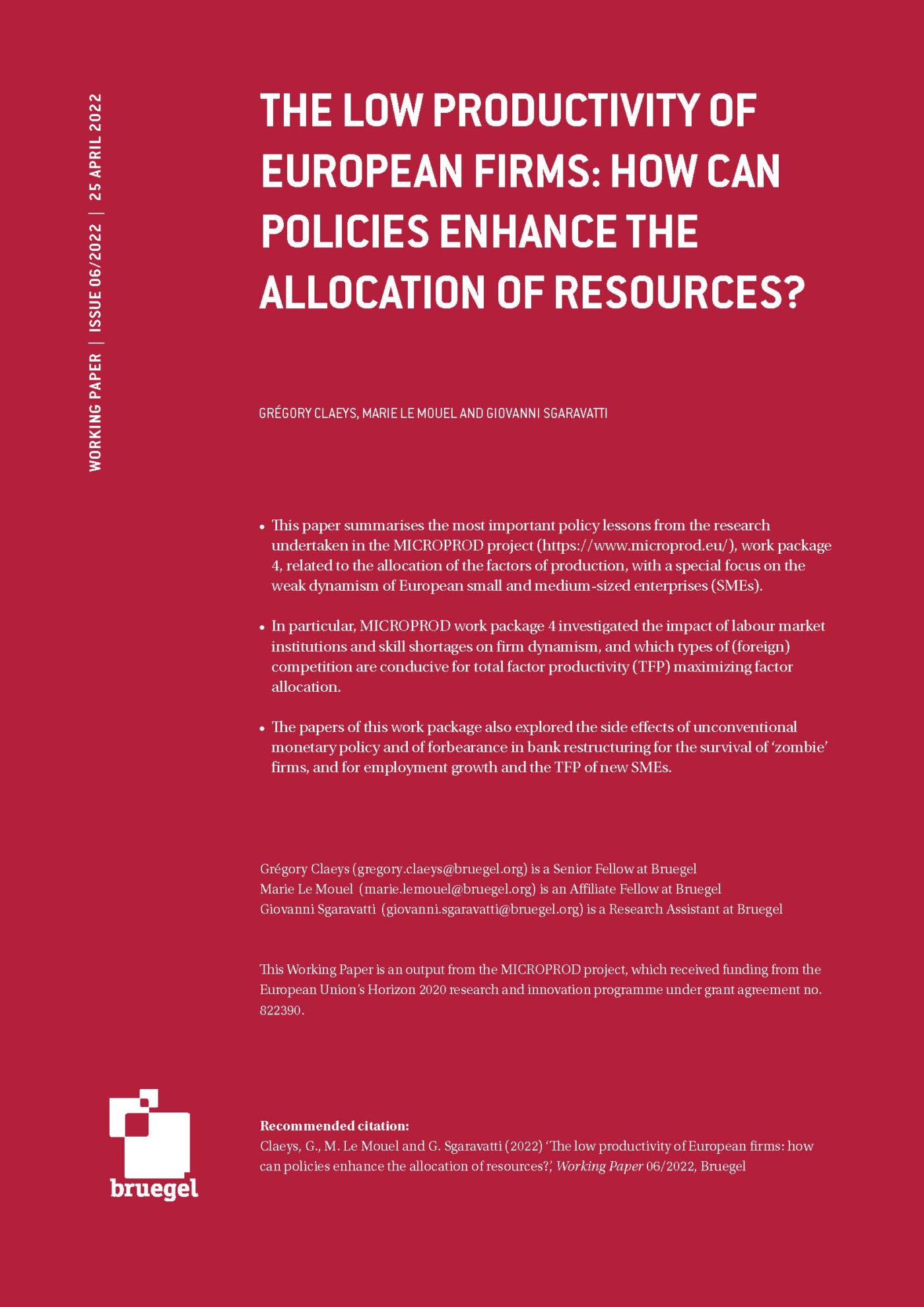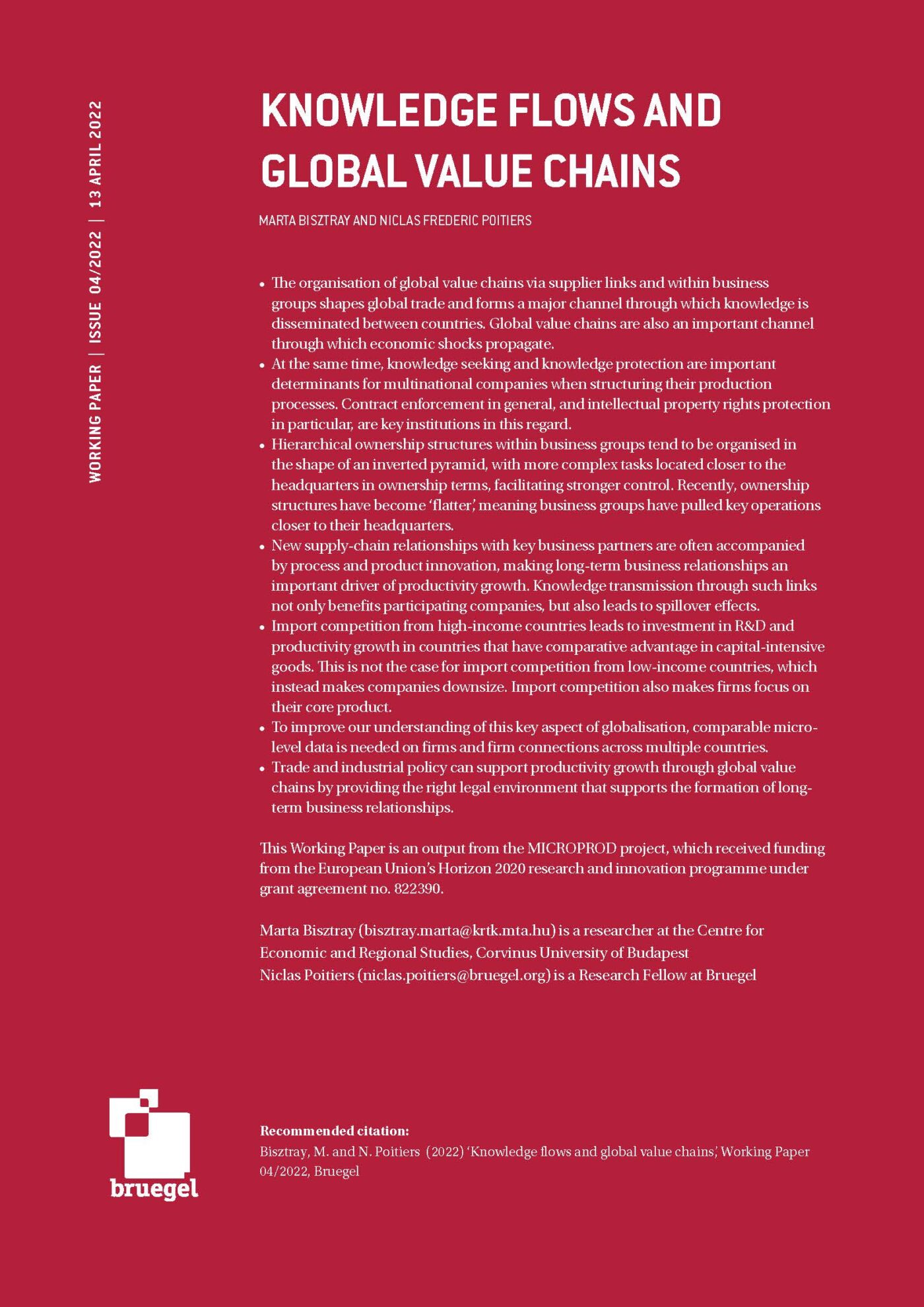Opinion
Greece: What to expect after the bail-out
After being under the close scrutiny of three financial assistance programmes since May 2010, Greece has finally left the bail-out in August 2018. How different is the post-bail-out era from the preceding eight years? Will Greece be able to stand on its own? And how might the country improve its economic outlook? In this post, which summarises a presentation recently given at an Athens conference, the author answers these three questions.
How different is the post-bail-out era from the preceding eight years?
While the bail-out is over, the conditionality and close scrutiny of European institutions and the IMF are not. The June 2018 Eurogroup meeting, which decided about the debt-relief measures, also issued a very detailed list of ”Specific commitments to ensure the continuity and completion of reforms adopted under the ESM programme”.
These include commitments to maintain a 3.5% primary budget surplus; to update property tax values; to increase the staff of the Independent Authority of Public Revenue; to meet various public financial management standards; to modernise the pension, health-care and social safety-net systems; to implement several reforms aimed at restoring the health of the banking system; to keep the minimum wage in line with a 2012 law; to fight undeclared work; to complete the investment licensing reform, the cadastre project, the agreed reforms in the energy sector, the privatisation strategy – which lists several companies to be privatised by specific deadlines, and the reforms to modernise human resource management in the public sector – which includes a number of specific sub-commitments; to adopt a number of specific labour laws by pre-determined deadlines; and to step up anti-corruption efforts.
Such a detailed list of commitments for a post-programme country is unprecedented. The implementation of these commitments will be closely monitored by the EU institutions in the so-called Enhanced surveillance framework, which was codified in the Two-Pack legislation of 2013. It will allow for a close monitoring of the economic, fiscal and financial situation and its evolution in Greece in order to support the completion, delivery and continued implementation of agreed reforms.
Thereby, the close monitoring and the long and detailed list of reform commitments bear a marked resemblance to the circumstances of the past eight years, even if the financial assistance programme is formally over.
Will Greece be able to stand on its own?
If everything goes according to plan, Greek public finances would not face financing challenges in the next four years, since the medium- and long-term borrowing need will be between only €1-2 billion a year, as calculated by the IMF (see Table 6). But the ‘if’ is a big ‘if’. It depends on maintaining the required budget surplus – and, thereby, a total overall surplus of €6.6 billion in 2019-2022 – as well as the €5.6 billion income transferred by the ECB, which in turn depends on meeting all reform commitments according to the June Eurogroup decisions discussed above. Privatisation revenues must be obtained and average annual economic growth must be close to 2% on average. The cash reserve of the Greek government, which is seen as a backstop tool, would be halved by drawing down €12.2 billion of it and thereby lowering the safety these reserves provide (the low medium- and long-term borrowing need also depends on rolling over the approximately €15 billion short-term treasury bills – but that shouldn’t be a big problem, since mostly Greek banks hold these bills).
If any of these conditioning factors are not met, then either further austerity measures or an increased volume of medium- and long-term borrowing would be required. Such a situation might easily get out of hand, as it would likely derail market sentiment and push the currently already high 4.1% 10-year government yield yet higher, making it more and more difficult to satisfy the increased borrowing need.
But while the next four years could be managed if everything goes according to plan, the longer term is at risk in any case. The debt sustainability analysis of the European Commission and the IMF led to opposing conclusions: while the Commission expects the public-debt-to-GDP ratio to fall just below 100% by 2060, the baseline calculation of the Fund foresees a ratio above 175% in the same year (see Annex V here).
The reasons for the diverging estimates mainly relate to the assumed primary surplus in 2023-2060 (EC: 2.2%, IMF: 1.6%) and nominal interest rate (EC: 4.8%, IMF: 5.7%), although the differences in nominal GDP growth assumptions are smaller (EC: 3.0%, IMF: 2.8%). There are also some differences for 2018-2022, but those differences have smaller impacts on the long-term debt trajectory. It is difficult to assess which set of assumptions is more realistic, yet I share the IMF’s concerns and note that a prominent group of economists has concluded that Greek public debt will remain unsustainable.
And there are reasons to worry about long-term growth, stemming from all three main components of growth: productivity, labour and capital.
Greece ranks poorly in indicators of innovation, suggesting that productivity growth would not be a major driver of economic growth.
The crisis took a painful toll on Greek demography. Natural change (that is, the balance between live births and deaths) has turned from a small positive value before the crisis to a deeply negative one, reducing population by more than 151,000 (1.4%) in 2011-2017. The main reason for the decline is a significant reduction in live births (roughly 95,000 per year on average in 2011-17 compared to 115,000 per year in 2006-10), but there was also a rise in the death toll.
Sadly, the trendline of natural change points to further falls. Net immigration to Greece, which boosted Greek population by about 0.2% a year before 2010, was overturned by the crisis and led to massive emigration, which reduced the population roughly 0.5 percent a year in 2011-2015.
Age composition of emigrants shows that mostly young people are leaving the country. Net immigration turned positive in 2016-17, largely due to the refugee inflows. A continued decline of population, especially if young and working age people emigrate, would lower the long-term growth potential.
And there are major concerns with the third main component of growth – capital – as I discuss below.
How to improve the economic outlook?
Economic growth in Greece would likely be sustained for a couple of years, partly due to the current positive momentum, the various reforms implemented so far and the consequent gradual changes towards a new growth model, but also due to the still-negative output gap (the difference between actual output and its potential level).
While estimations of the output gap are highly uncertain, all three major institutions conclude that the current Greek output is well below its potential: for 2018, the IMF’s estimate is −2.6%, the Commission’s estimate is −5.2%, while the OECD’s estimate is −10.1% (the wide range of these estimates further highlights their uncertainty.) Still, most likely, the Greek economy remains below its potential level. The process of recovering the cyclical output gap will likely push GDP growth numbers up, since the negative output gap means that there are idle resources and the use of these idle resources leads to more production. But once the recovery from the negative output gap is over, which is expected in a few years from now, the potential rate of growth will determine actual output growth.
Potential growth is seriously undermined by the current dis-investment – that is, the negative net investment rate – as I argued in a previous post. Net investment is gross investment, minus the depreciation of the capital — for instance, the replacement of worn-out machines, or the renovation of a decaying hotel.
The figure below shows that both gross and net investment declined dramatically in Greece after 2007, with net investment turning negative in 2011. There has been some recovery in investment since 2013, with recent gross investment growth numbers (10% in 2018, as forecast by the European Commission in May this year) appearing significant. But the base is so low that even such a strong rate of investment growth does very little in shifting investment rates to healthier territories: the net investment rate is expected to remain negative, at −3% of GDP in 2018. Additionally, more recent investment numbers suggest that the Commission forecast might prove to be too optimistic, so net investment could be even lower than −3%. A negative net investment rate means that the effective capital stock of the country is declining. Clearly, a much larger boost to investment is needed to move the net investment rate into healthy positive territories.
It is instructive to compare Cyprus and Greece. Both gross and net investment fell similarly sharply in Cyprus too (from a somewhat higher level), but there was a quick recovery in Cyprus and net investment now exceeds 10% of GDP, which is not far form the historical average of 2000-2008. The major driver of the rapid investment recovery in Cyrus is foreign direct investment (FDI).
While Cyprus is a small country and also a financial centre, and thereby large capital flows relative to GDP are not unusual, it is remarkable that the net FDI inflow to Cyprus was about 8% of GDP in 2016 and 23% of GDP in 2017. As the Commission’s July 2018 country report on Cyprus argues, “The investment outlook is positive. Several foreign-funded, large-scale projects, focused on tourism infrastructure (marinas, hotels and other accommodation), are already being built or are about to be started” (see page 13 of the report).
In Greece, by contrast, net FDI inflow was about 2% GDP in the past two years. This constitutes an improvement compared to 2014 and 2015 when there was a slight net FDI outflow from the country, but is still less than one-tenth (relative to GDP) of what we see in Cyprus in 2017.
Yet FDI inflow is the main hope of Greece for boosting investment. Public investment can hardly be increased due to budget constraints. Domestic investors suffer from weak profits, while Greek banks are burdened with very large amounts of non-performing assets and therefore their lending activities are hampered.
But Greece ranks rather poorly on a global FDI country attractiveness index, and in fact even fell back from its 45th position in 2017 to the 48th position in 2018 among 109 countries. Clearly, Greece has to improve its trustworthiness, which necessitates substantial reforms to improve the business environment and the reliability of its economic policies. That, in my view, necessitates the implementation of the reforms agreed with the Eurogroup, so asking for exceptions is not a good strategy.
On the positive side, the recent growth plan of the Greek government recognises the importance of improving the business environment, attracting FDI and boosting start-ups and SMEs and has many other useful plans. Yet the key instruments to reach the goals of the plan will have to be legislated and implemented, and this promises to be a difficult process.
If Greece fails to achieve a very large boost to investment, sooner or later the low capital stock will become a bottleneck to economic growth. When that happens, growth will slow down, especially if the current negative output gap has closed by then. Slower growth will make it much more difficult to meet fiscal targets and might require a new round of austerity, which in turn could lead to political turmoil within Greece and a renewed dispute with the Eurogroup. Such a situation might lead to a new sovereign debt crisis and might force Greece to painfully return to a new financial assistance programme.
Avoiding a new Greek failure and any consequent fourth financial assistance programme should also be in the interest of the international community. While the EU has provided various forms of help to support the Greek economic recovery, more European financial support of investment in a country that has suffered such a dramatic economic and social collapse since 2008 would be justified.
This blog post is based on the author’s presentation at the conference “Greece’s exit from the bail-out. The day after”, organised by the Hanns Seidel Foundation & the Wilfred Martens Centre on 13 September 2018 in Athens.
Republishing and referencing
Bruegel considers itself a public good and takes no institutional standpoint.
Due to copyright agreements we ask that you kindly email request to republish opinions that have appeared in print to [email protected].













